by Mek Karpeles, Tabish Shaikh
We’ve redesigned our Book Pages: Before →After.
Please share your feedback with us.
A web page for every book… This is the mission of Open Library: a free, inclusive, online digital library catalog which helps readers find information about any book ever published.
Millions of books in Open Library’s catalog have been made available to preview, read, or borrow using the Internet Archive’s controlled digital lending library. However, the catalog also features tens of millions of books which are yet to have previews and instead serve as resources that help patrons learn more about books, share lists of books they love, keep track of what they’re reading, and locate copies from bookstores and local libraries.
Thousands of new books are added into Open Library’s catalog every day. Like Wikipedia, thousands of edits are contributed by community librarians and volunteers across the globe. Open Library is a community effort and any patron who registers online for a free Internet Archive library card may participate.
Since its inception in 2006, a core tenant of Open Library’s service has been the notion of one web page for every book.
What is a book, exactly?
Before creating a page for every book, it’s important to have an understanding of what a book is to different classes of patrons.
It seems like a simple question. We know a book when we see one. But what if we see ten translations of, “Lord of the Rings: The Fellowship of the Ring”. Are they the same book? Or more importantly, when is it convenient for us to consider them different books versus the same, or vice versa?

Even for expert librarians, the seemingly simple question, “what is a book” has a surprisingly difficult and nuanced array of answers. Librarians have even developed complex classification models like FRBR to help figure it out. Yes, we’re serious:
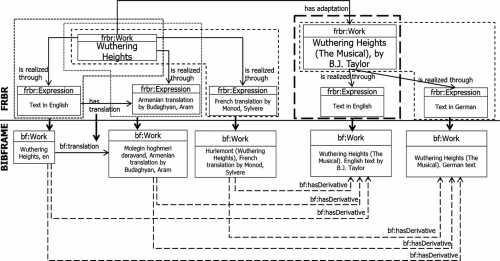
Perhaps the most correct answer is, a book is kind of like the Room of Requirement from Harry Potter; it’s whatever a reader needs it to be within the situation.
Sometimes “Harry Potter” is referred to as a book (even though it’s more accurately a Series; a logical grouping of similar works). Other times, “Harry Potter and the Half Blood Prince” is referred to as a book (though it’s more precisely a Work; a logical grouping of similar editions). Other times still, the term book refers to the specific published version one is reading: e.g. “Harry Potter and the Half Blood Prince”, 2005 (English) ISBN 9780439785969. And of course there’s the distinction between the copy of this Edition sitting on your library’s shelf, and your personal copy which is annotated with your notes, marginalia, and is signed by your favorite author.
Do these semantics really matter?
Consider the following exchange with our local friendly librarian:
Us: Excuse me, do you have any copies of, “Return of the King” by J.R. R. Tolkien?
Librarian: Bonjour, yes! Are you looking for a specific edition?
Us: Whatever edition is available, I just want to read the book.
Librarian: Here you go!
Us: This is not the right book, it says, “Retour du Roi”. And where are the pictures and maps or Mordor? This isn’t the cover I remember.
For many, the fact that a book has a specific edition is inconsequential; often times multiple comparable editions could satisfy their requirements.
Our theory of change
Our theory is, when a patron asks for a book, they are often requesting a Work and wish to have have a “correct” Edition be inferred, such that the following questions are answered:
- Is it the right work?
- Is it in the right language?
- Is it available now for me to read?
- Is it available in the right format?
- e.g. hardcover, softcover, online, offline, epub, pdf, daisy, audio…
This agrees with feedback we’ve received from readers:

But hindsight is 2020. As a first step towards this direction, Open Library started simple: one page for every edition.
A Page for Every Edition
When OpenLibrary.org first opened its virtual doors around 2007, patrons were able to search through thousands of books, like this 2001 edition of, “A Heartbreaking Work of Staggering Genius” by Dave Eggers.

At first glance, this is great. This book page does a nice job of representing this edition’s metadata — everything from description to ISBN.
In the wild though, not every edition is a release of a different book. For instance, consider this Japanese edition and this Spanish edition which are both translations of the same English book, “The Da Vinci Code“. In 2007, all three of these editions would have been separate book pages on Open Library and none of them linked to each other. If you were to happen upon the Japanese version, you wouldn’t have had any way of knowing if there was also a Spanish version.
Searching and browsing using an Editions-based system can also be problematic and frustrating, especially when a search term matches a book with hundreds of published editions. Imagine searching for the title “Tempest“, while looking for the Star Wars book by Troy Denning and having to scroll through 650+ editions of William Shakespeare, “Tempest” (sorry, we know this page loads slowly!) .
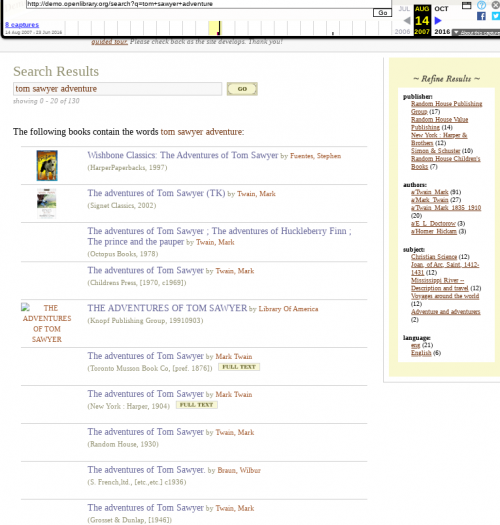
The challenges of an edition-based system are exemplified well by searching for books by Dave Eggers using the 2007 version of Open Library. One must wade through a deluge of titles, many reappearing multiple times as different editions of the same book, making it difficult to explore different titles.
If only there were a way to get all the benefits of an Edition Page but also have a way to roll-up similar editions into logical groups to help patrons to search for and differentiate books at a Work-level.
Adding Works
In March 2010, the Open Library team, led by the wonderful George Oates, helped address this problem with a redesign which introduced the concept of Works — i.e. logical groupings of similar editions.
In this design, the Japanese edition, the Spanish edition, and the English edition of, “The Da Vinci Code” from before all appear in a tidy editions table on a single Work Page. Now, a patron could perform a search for a work of interest, navigate to a Work Page, and then choose a relevant matching edition from the table. Clicking on an edition brought the reader to an Edition Page with information about that specific book.
Overall, this was a big step forward for Open Library patrons who were clamoring for a more organized way to find books.
This new design was a big step forward in making it easier to find the right general work. It also surfaced additional challenges and opportunities. For instance:
- Once the patron lands on the Editions Page, they lose the ability to easily view or switch to different editions.
- Some patrons reported confusion on the Work Page concerning which representative book cover was being displayed.
- Also on the Work Page, for books with longer descriptions, the editions table became pushed far below the fold and readers that were newer to the site reported difficulty discovering if editions were available to read or borrow.
- Managing two separate designs (for the Work Page & Edition Page) added cognitive load to some patrons who reported getting lost, and to developers who had to maintaining these designs.
For the average reader, the terms Work and Edition can confuse their experience. It is especially jarring when throughout the Open Library experience, a reader may either be dropped into a Work page or an Edition page. From the Editions Page, there was no way to see a list of alternative editions without changing pages to go to the Work Page. And on the Work Page, a reader would have to go to the Editions Page in order to learn more about that specific title and decide if it’s the one they want to read.
Again, our theory is: often times a patron requests a Work and wants the/a “correct” Edition to be inferred.
With the Editions-only model, a reader may have to wade through hundreds of irrelevant editions of books they’re not interested in. With the new Work pages, readers still had to perform the challenging task of deciding which edition was right for them.
Combining the best of both worlds
To simply this experience for readers, this week we released a new type of Book Page (see figure B, below) which combines the affordances of the Work and Edition Pages into a single view where readers may find all, neatly organized information about a work and about a specific edition at the same time, on the same page. Two pages become one:
By default, the Book Page attempts to automatically feature the “best” (previewable, available) edition of a book and places an editions table front-and-center to enable readers to quickly switch which edition is selected.
- Editions table. We added a new search box to enable patrons to find relevant editions without reloading.
- Navigation tabs. We have bucketed the work’s information into an “Overview” tab and the current Edition’s information in the “This Edition” tab. The tab bar always sticks to the top of the page for easy access to different sections of the page.
- Expandable descriptions. In previous designs, long text descriptions made it difficult to see all important book information at a glance. There are now “Read more” links to expand and collapse long descriptions.
- Clearer buttons. All the favorite actions of readers such as borrowing, searching inside, adding books to reading log, and rating books has all been grouped together and moved right below the book cover. It’s hopefully more clear now that the “Want to Read”
- Load times. We know page speed is a priority for readers. The new Books Page should be significantly faster (and we’re still working on it).

Here is that same 2007 Book Page “A Heartbreaking Work of Staggering Genius” by Dave Eggers brought to you with 2020 vision.

What’s staying the same.
We tried to change as little as possible and were careful not to remove existing functionality:
- URLs: Developers and partners will be happy to hear that /works and /books urls and APIs will continue to work as expected without change. Both the work and edition pages will simply appear to use the same consistent design.
- Lists: While admittedly slightly less convenient, you can still add Works to Lists by clicking the “Use this Work” checkbox as shown below. By default, Lists will use Editions.
Please share your feedback with us
We would love your feedback on what you like about our new Book Page and what you wish were different.
- Please take a moment to let us know what you think using this Google Form
- Tweet feedback to @openlibrary
- Is something broken on the Books Page? Please let us know @ https://openlibrary.org/contact or open an issue on github.
Thank you to Jim Shelton, Brenton Cheng, Jeff Kaplan, Lisa (@seabelis), Charles Horn, Nolan Windham, and countless others who provided design and product feedback to make this effort possible. And Sahar Massachi for providing feedback on this post.
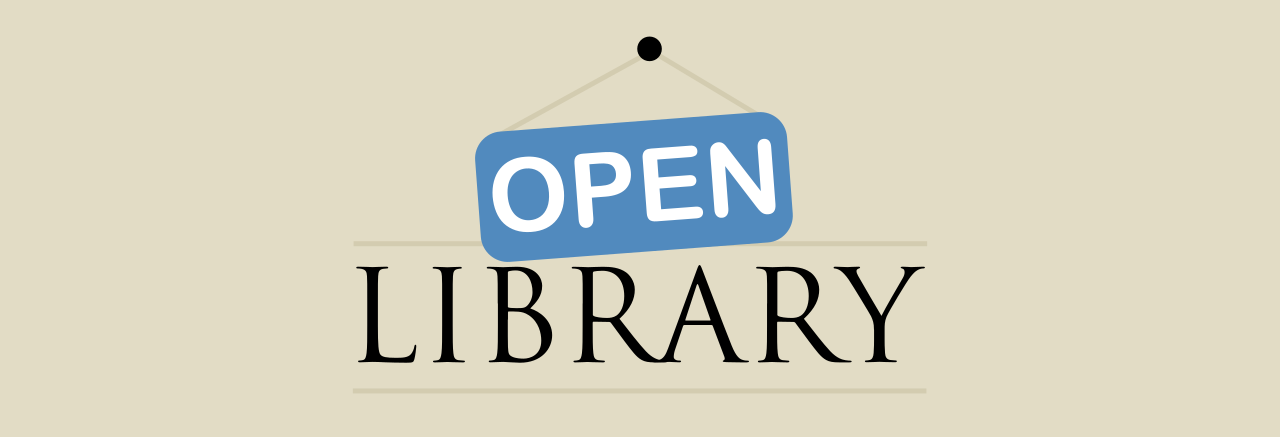
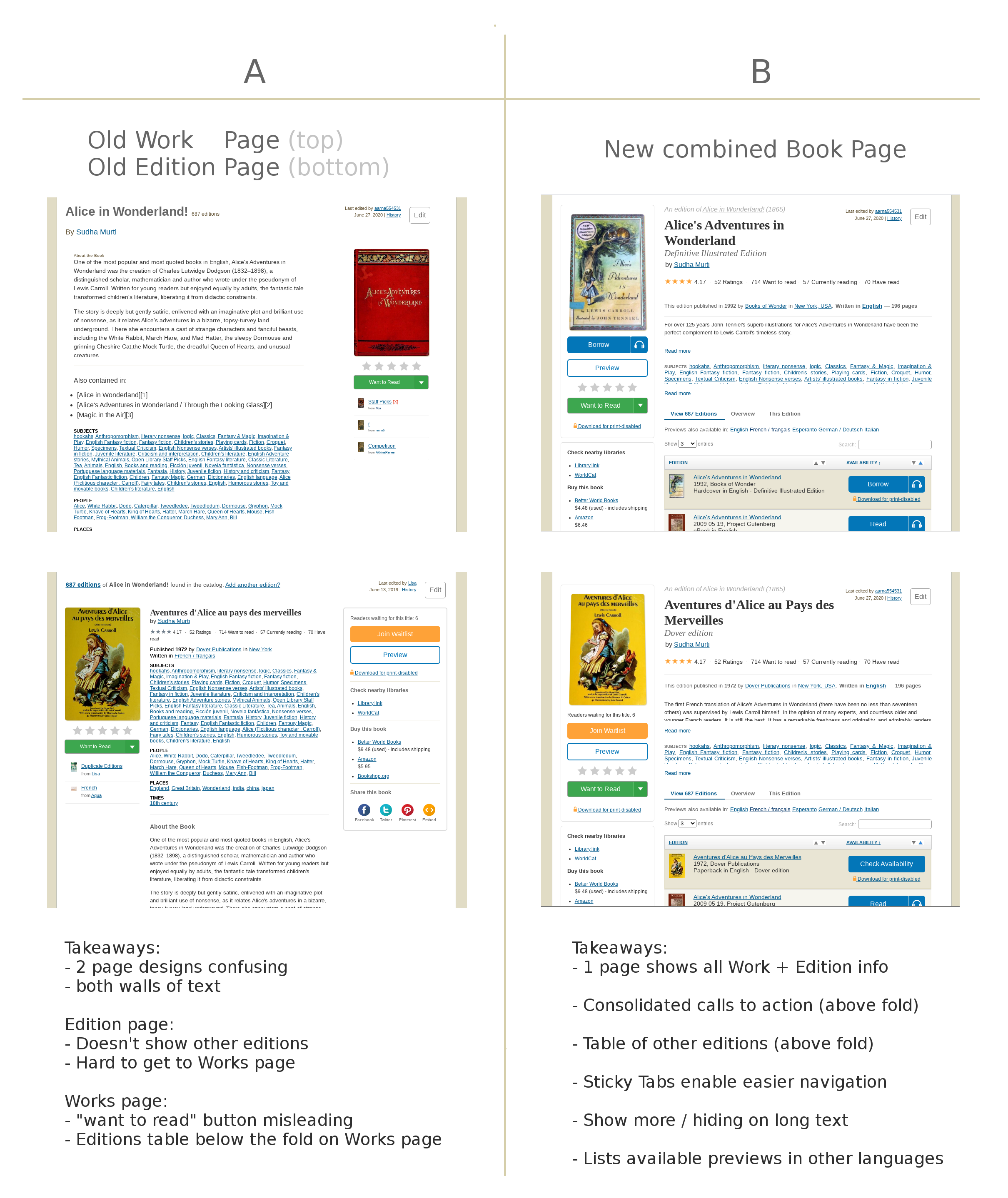
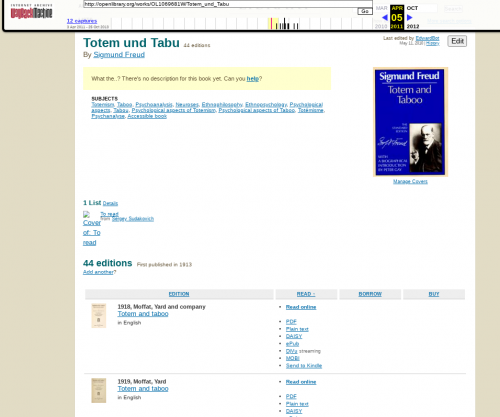
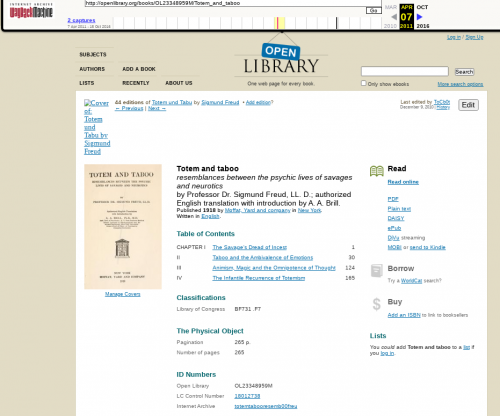
Pingback: Re-thinking Open Library’s Book Pages | LJ infoDOCKET
Thank you also for the focus on performance!